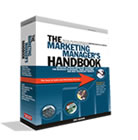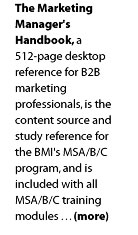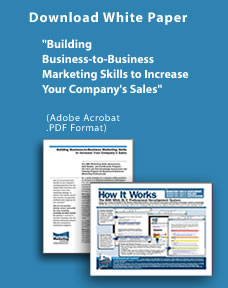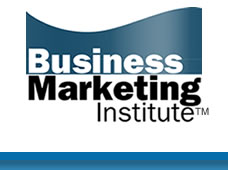


Tuesday Marketing Notes (Number 15—January 3rd, 2006)
A B2B Marketing Newsletter for BMA Members
____________________________________________________________
MAKE SURE YOU CONTINUE TO RECEIVE EACH ISSUE OF TUESDAY MARKETING NOTES—CLICK HERE TO RENEW YOUR FREE SUBSCRIPTION
(if you’ve already signed up previously at this link above, no need to do so again)
Trade Shows
Part 1: Evaluating and Getting the Most from Your Company’s Trade Show Opportunities: Three Keys to Trade Show Success
by Eric Gagnon
Trade shows are one of the most important marketing activities for B2B marketing professionals. They’re also the one marketing activity that depends the most on solid, timely execution.
That’s because all of the activities associated with orchestrating a successful trade show appearance for your company: Design, development, and production of your company’s trade show booth and printed deliverables, pre-show mailings and other promotion, and all of the logistics involved in moving everything to the show location, must be planned and executed so they all come together in time for the first day of the show.
A day’s slippage past the show date on any one of these is a major embarassment; two days’ delay can be a threat to your company’s marketing program.
This week and next week, we’ll cover the basics of B2B trade show execution.
Trade Shows: Where Markets Come Alive
For a few days every year, an industry’s major trade show is the place where its market comes to life. At the show, companies, products, competitors, prospects and customers aren’t names scribbled on a white board—they’re living, breathing people working their booths and walking the aisles.
Experienced marketing professionals know that trade shows provide opportunities to present and sell products that can’t be duplicated by advertising, Web sites, direct mail or other forms of marketing. A successful trade show appearance has launched many a successful young company, and for certain types of established businesses, a company may write sales orders for most of its annual business in a few days at the industry’s major show.
Trade Shows Keep Marketing Professionals Sharp
As a marketing professional, trade shows are an invaluable experience because they put you face-to-face with your (or your client’s) own prospects and customers—the very people who will see the ads, mailings, and other deliverables in your marketing program. A trade show is the one marketing event where your prospects come to see you, and to hear what your company has to say about its product.
I’ve always been a big believer in having marketing managers and agency people work their company’s (and their client’s) trade show booth during the show. Giving sales presentations directly to prospects at a trade show can make a tremendous improvement in how you develop your company’s marketing programs and deliverables.
By interacting with real prospects, and assessing their response to each of the product sales benefits and features you present, you learn the best sales approaches to use in your print advertising and direct-mail sales copy, and how your product’s sales copy points and product feature descriptions should be presented and positioned in your company’s marketing deliverables.
Performers always say there’s nothing like a live audience, and for marketing managers, there’s nothing like talking to real prospects to help you keep your product’s marketing message on target.
Key Number One: How to Select the Best Trade Show Opportunities
For most established companies, there are usually at least one or two major must-attend shows, and a handful of smaller, more specialized shows in every industry. However, start-ups, early-stage companies, or companies entering new markets are always faced with the task of selecting the best trade shows to sell their products.
Which brings us an important issue: Attendees. If you don’t have any prior experience with a trade show, how can you tell whether or not the people attending this show will actually be the kinds of prospects you are trying to reach?
The best way to get a sense of what kinds of potential buyers attend a show is to ask the sales rep for the show’s producer to generate a mailing list of last year’s show attendees, containing only their job titles and company names for all attendees. This gives you the opportunity to identify the kinds of people, by their job title, function, and company, who are likely to attend the upcoming show. If your best prospects are Vice Presidents of Manufacturing or heads of design engineering, and the list from last year’s show lists mostly production managers and union shop stewards, or you don’t recognize many of the companies on the list, you may want to pass on this show.
This list is one of the best ways to profile the makeup of a trade show audience, and shouldn’t be too difficult for the show producer to generate for you. Since the list doesn’t contain a complete record, the show producer shouldn’t have a problem with handing this list over to you for free, especially if they want your company to exhibit at their show.
Key Number Two: Selecting a Trade Show Booth: Location and Size
Your choice of booth location and size are critical. Of the two, your booth’s location is more important than its size, because location plays a major role in the quality and amount of visitor traffic your company receives at the show.
Choosing the best booth location: Ask your show’s sales rep for a booth diagram showing the booth spaces available for the show. Your show’s sales rep can also send you an up-to-date version of this diagram, showing booth spaces already taken by other companies at the show.
From this diagram, you’ll want to note where the major exhibitors are located, and where your competitors are. Your industry’s biggest movers and shakers are usually the major exhibitors, and they usually take the prime booth spaces and best locations at the show. If there’s a major strategic advantage for your company to be positioned near one of these big companies—if, for example, one of them is a major joint venture partner—this should play a role in your booth location decision. If possible, you’ll also want to locate your booth far enough away from any of your company’s direct competitors: Better that your sales staff spend their time staying focused on talking to prospects in your booth, than being worried about who’s visiting your competitor’s booth across the aisle.
The best booth space locations in a trade show are:
In the front row facing the show entrance: This is the best space for your booth: When show visitors walk on to the show floor, your booth is one of the first they will see. Out in front, you’ll have the opportunity to pull these visitors in before any other exhibitor. While these positions are often taken by the biggest exhibitors, if at all possible you should try to reserve a booth space here;
At the end of an aisle, front half of exhibit floor: The next best position is space at the end of an aisle, preferably as close to the entrance of the exhibit floor as possible, or at least within the front half of the entire show floor. Since booth spaces at the end of an aisle place your booth at the intersection of two aisles, this location makes your booth visible from at least two sides (or all three sides if your booth fills an entire corner);
Center interior row, front half of exhibit floor: If neither front or corner booth positions are available, the third best position, and the best option if your company is selecting the standard 10' X 10' minimum booth size, is any space in any interior row in the front half of the show floor. These spaces are usually the ones most available to exhibitors taking the minimum-size booth spaces, and they’re a default choice if you can’t get a space in the other two positions. If you’re unable to reserve a space toward the front half of the floor closest to the show’s main entrance, any other booth space in any interior row will do;
Outer perimeter locations: The least desirable booth space positions are those along the outer perimeter of the show floor. Booths in these locations attract much less traffic than other locations. Since they are the least popular spaces, they are usually the last to sell out, and may be your only option if you are trying to get into a show at the last minute. If this is your only space option, try to avoid booth spaces at the end of a row, or by fire exits; these locations draw the least traffic at a show.
As you make your final booth choice, pay close attention to who your “neighbors” will be, on either side of, and directly across from, your booth, to avoid getting a booth space next to a competitor, or any other exhibitor whose presence near to your booth might reflect poorly on your company.
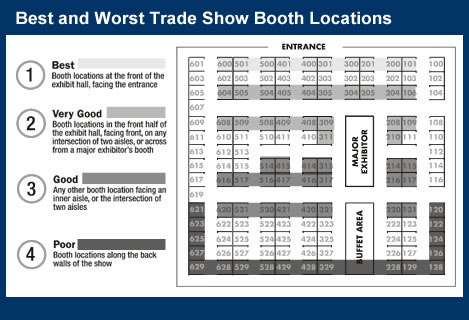
Selecting your booth size: A bigger booth space rarely translates to better sales results at a trade show. Since location is far more important than booth size, and doubling your booth size roughly doubles your booth cost (and other direct show costs, such as your booth backdrop display and related signage), there’s little downside risk to keeping your booth space to a minimum.
Trade show producers usually offer booth space in 8’ X 10’ or 10' X 10' sizes, the minimum booth space available for exhibitors. This size is adequate for most small to medium-size companies, and can comfortably accommodate three or four of your company’s sales reps and prospects who visit your booth. You can go for a larger booth space, by joining two or more of these spaces together, or by renting larger booth sizes. This often gets you a better location on the show floor, such as near the main entrance, or on the end of an aisle.
While a company can always spend too much by renting more booth space than it needs, marketing managers rarely regret having rented a booth space that was too small. There is really no justification for a larger booth space, unless your company’s size, the size of your product line, or the number of sales reps in your company requires it.
Key Number Three: How to Get Your Company’s Executives on Conference Session Panels
You can give a tremendous lift to your company’s profile and credibility at a trade show by getting one or more of your company’s key executives lined up as a speaker or panel participant on one of the show’s conference sessions.
A speaking engagement at a trade show conference session by one of your company’s executives is a tremendous opportunity for exposure for your company and its products, and confers great credibility on your company. In addition to opening new sales opportunities at the show, conference participation can also spark new joint ventures and other high-level business opportunities from members of the panel audience who see and hear your company’s executives speak on a panel session.
How to begin: Conference producers are always seeking to improve the content of their conferences. Make their job easier by helping them do their jobs. The best way to get “your people” on as speakers or panelists is to propose an entirely new session topic and speaker panel for their next show. Select a topic where your company has proven credibility as a recognized industry leader. Then, in addition to featuring one of your company’s key executives on the panel, propose the other participants who you think should be on this panel, and who represent viewpoints from all sides of the issues addressed by the panel.
These could be executives in partner companies, trade associations, or other influential executives who can speak knowledgeably on the panel topic. Company identification is more important here than name identification for these other panel participants. Your objective here is to form a “neutral” panel, whose participants will substantively address the panel’s topic, without resorting to a sales pitch for their company’s product, or other marketing hype.
Get in contact with these other panel speakers, indicating to them that: “_______ (your own company’s executive) suggested you’d be a great speaker for this panel at the next conference.” Everyone is flattered to be asked to participate on a conference panel at a major trade show, so it should be easy to get a tentative agreement from other participants.
Next, get back in touch with the conference producer, and outline the content of the panel session and the backgrounds of the speakers you’ve lined up for it. If they’re interested in your idea, the conference producer will then begin to take ownership of your panel session idea and will finalize the details on their own.
When to begin: The best time to propose a new panel topic for the next trade show is during the current show. Study the panel topics in the current show’s conference, and try to identify content gaps—new technologies, new industry issues, and new business developments—not addressed on panel discussions at the current show. Query the show producer a couple of weeks after the show ends with your first proposal for your new panel idea and participants. Once you get a go-ahead, you can then line up the other participants.
Many conferences also issue “invitations to speakers,” outlining topics they’d like to address in panels for future conferences. Also, ask the conference producer about the new topics he or she is interested in covering for their next conference.
Do not delegate this panel-formation task to your PR firm. Since you are essentially marketing your company’s credibility on the panel topic, take charge of this project yourself. Most conference producers have been burned too many times by PR firms who overpromise and under-deliver on speaker qualifications and panel content, so they’d prefer to keep PR firms out of their conference content.
Tips for panel presenters: Make sure that your company’s executive presenter sticks to the topic of the panel and that their presentation provides information that is truly useful to the panel audience. Nothing turns audiences off more than hearing someone’s standard company sales pitch, so you should emphasize to the executive that the purpose of his/her appearance at the panel session is for the good of the industry, and not to overtly promote the company’s product or service.
Post full contact info at the end of presentations: Although a measure of success for any speaker on a session panel is the number of business cards they collect from interested audience members who approach them after the show, many interested panel audience members won’t approach speakers until after they return home, so make sure that your speaker’s PowerPoint presentations contain their full company contact info.
In Part Two next week, I’ll cover pre-show promotion, trade show deliverables, and logistics . . .
Comments? Suggestions? Send them to me at eric@realmarkets.net
_____________________________________________________________
Eric Gagnon (eric@realmarkets.net), is president of GAA, a sales and business development consulting firm, and is the author of The Marketing Manager’s Handbook, the master study guide for the Business Marketing Association’s Marketing Skills Assessment, Skill Builder, and Certification (MSA/B/C) programs.
For more information on The Marketing Manager’s Handbook, available to BMA members at a special discount, link to:
http://www.businessmarketinginstitute.com/book.html
_____________________________________________________________
Test, Train, and Build Your B2B Marketing Skills for Better Sales Success: BMA Announces New Assessment, Training, and Certification for B2B Marketing Managers
For more information on the new BMA Marketing Skills Assessment, Skill Building and Certification (MSA/B/C) training and professional development program, visit http://www.businessmarketinginstitute.com
